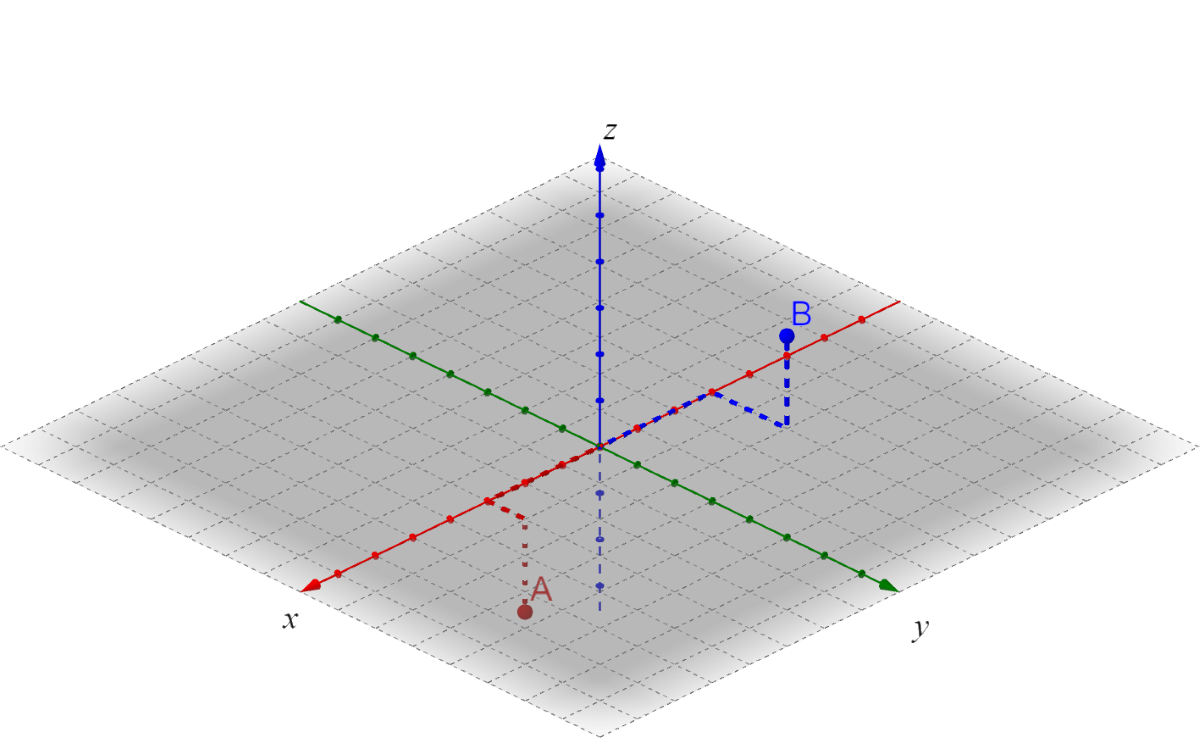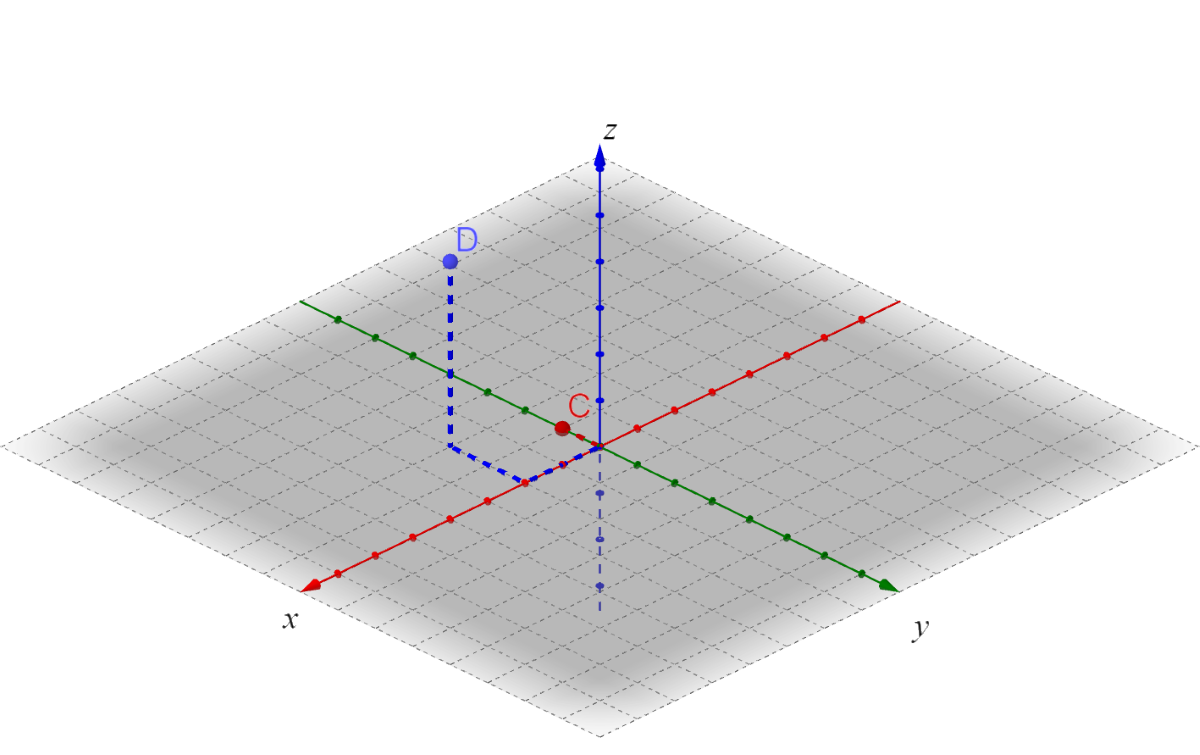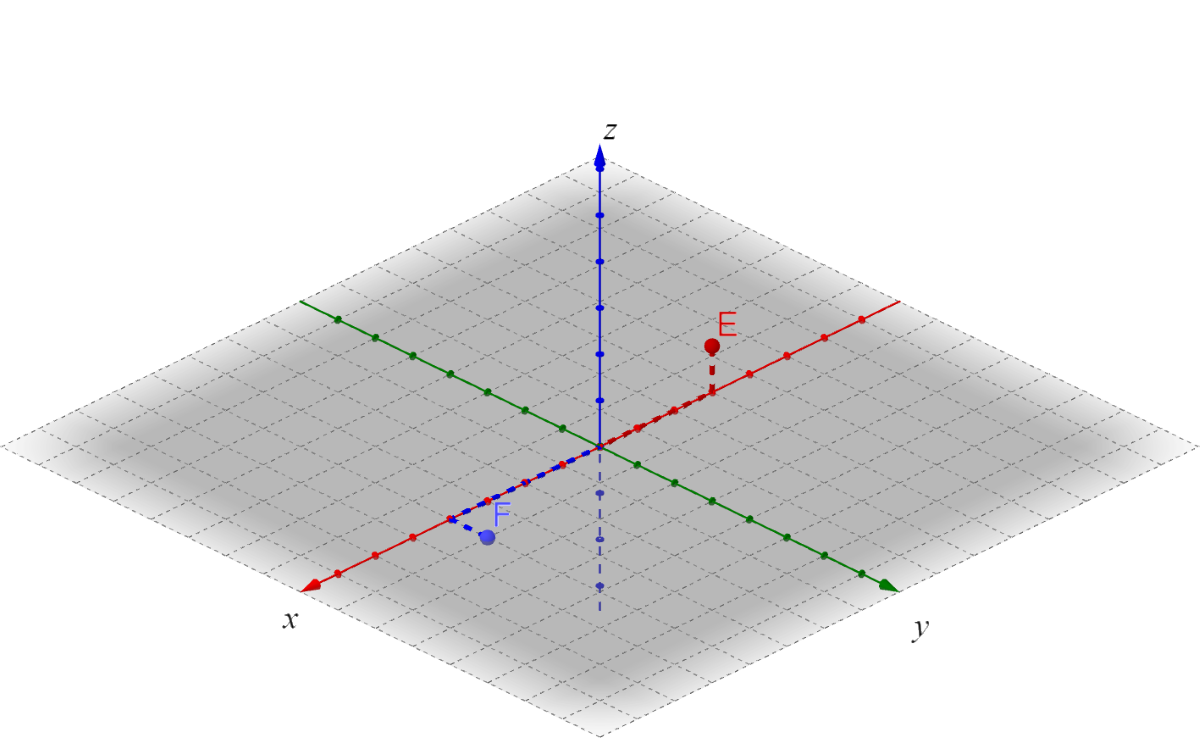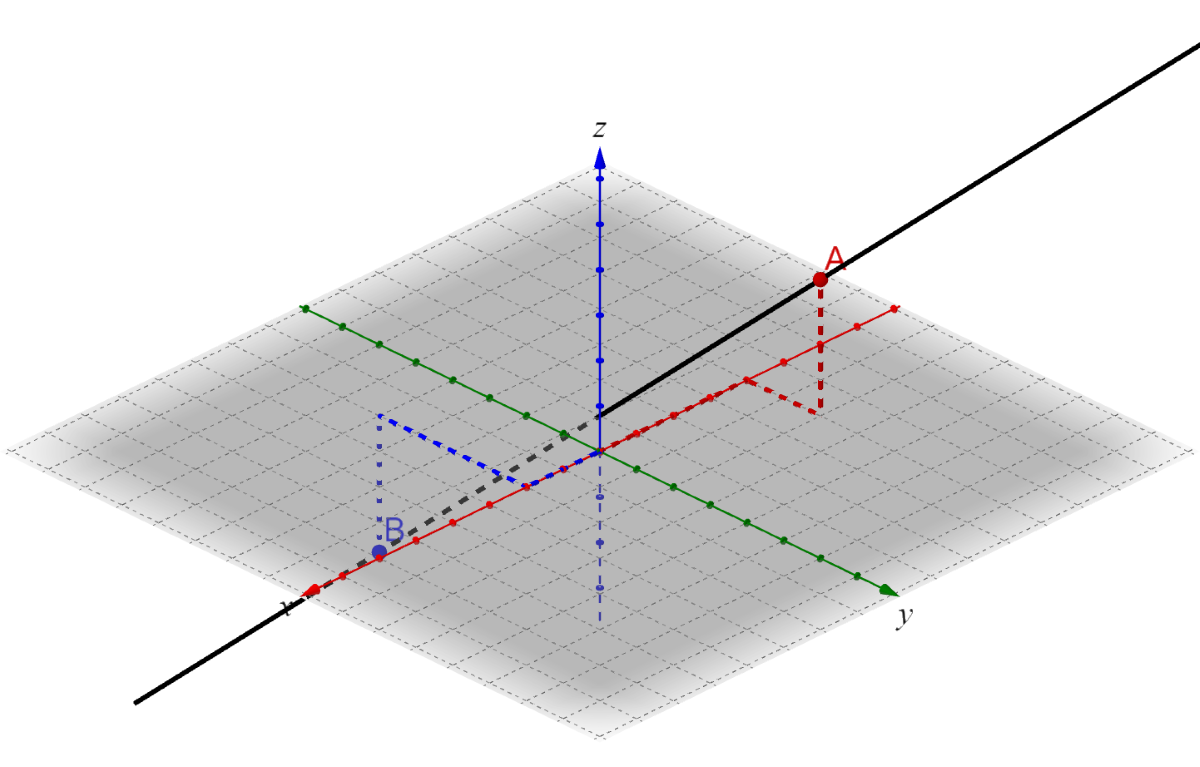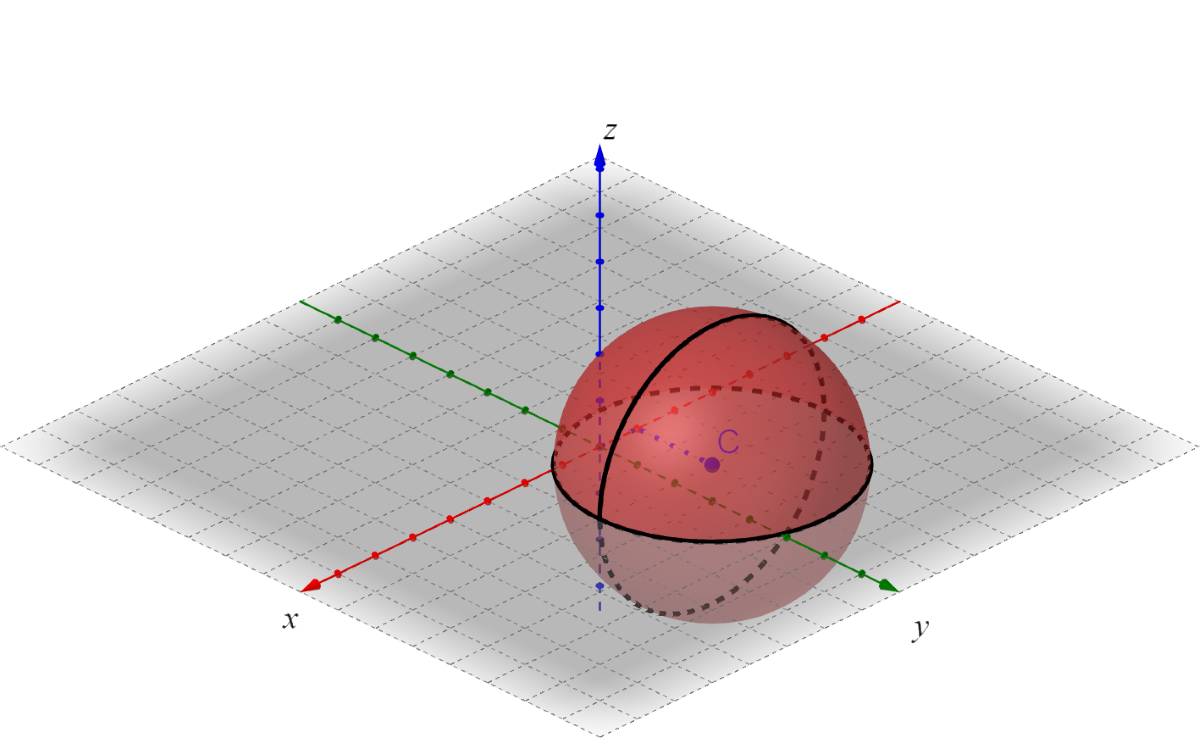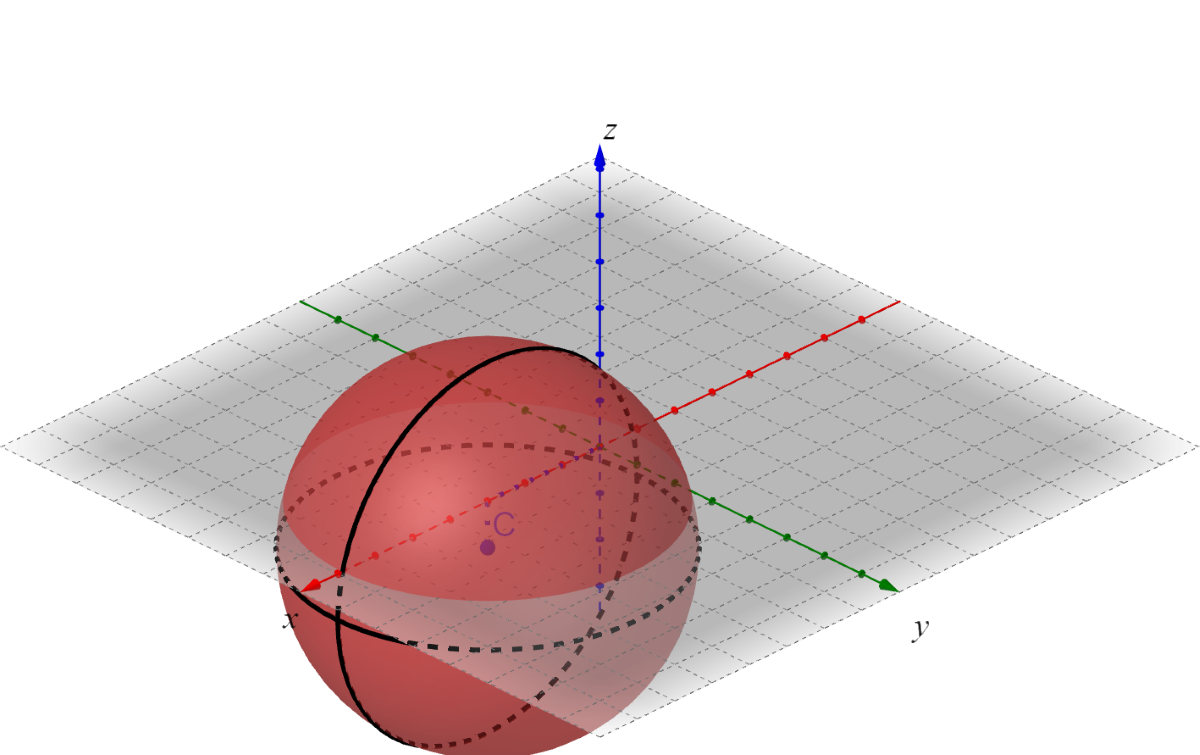Precalculus by Richard Wright
Precalculus by Richard Wright
Through him all things were made; without him nothing was made that has been made. In him was life, and that life was the light of all mankind. The light shines in the darkness, and the darkness has not overcome it. John 1:3-5 NIV
Summary: In this section, you will:
SDA NAD Content Standards (2018): PC.5.3
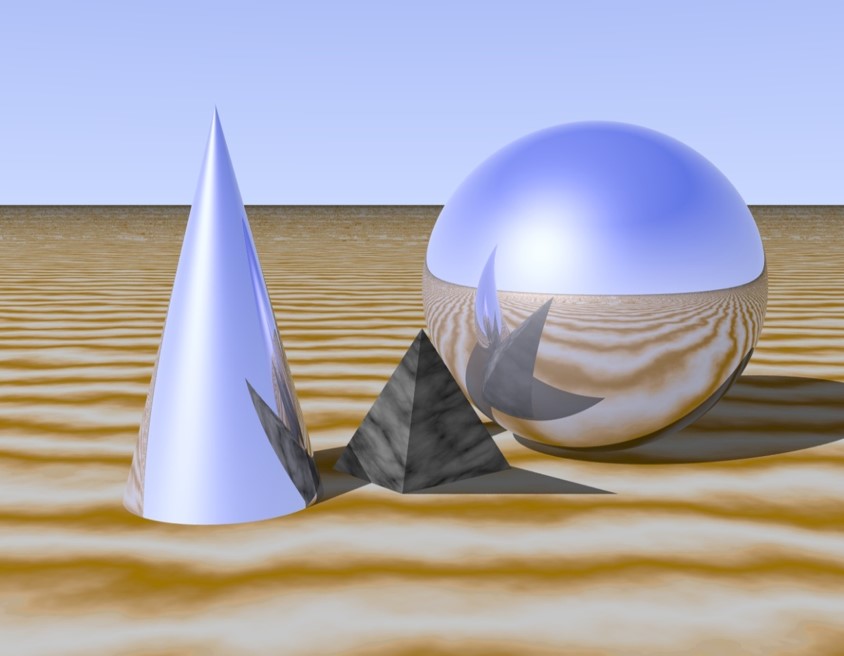
Much of what has been done so far in your mathematics experience has been in two dimensions. There has only been x and y. However, there are more dimensions. We can move freely in three dimensions in our universe. This chapter is about three dimensional shapes. By finding patterns two- and three-dimensions, it is possible to think of higher dimensions. In mathematics, there can be any number of dimensions. Each dimension is identified by a separate variable.
Points in two dimensions are described by the ordered pair (x, y). Points in three dimensions are described by the ordered triple (x, y, z). There are a couple standard ways to graph points in three dimensions. The method this book uses is with the positive x-axis coming diagonally down to the left, the positive y-axis going diagonally down to the right, and the positive z-axis going up. In reality, the x and y-axes are coming out of the paper at an angle. The view of the graph is looking down at the origin. No matter how you graph three-dimensions, it will always be a projection since the graph will be drawn on two-dimensional paper. Thus, you have to imagine what the graph really looks like.
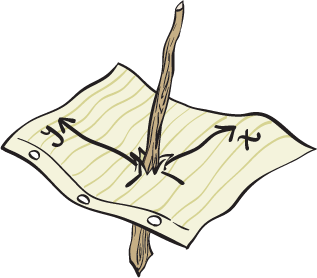
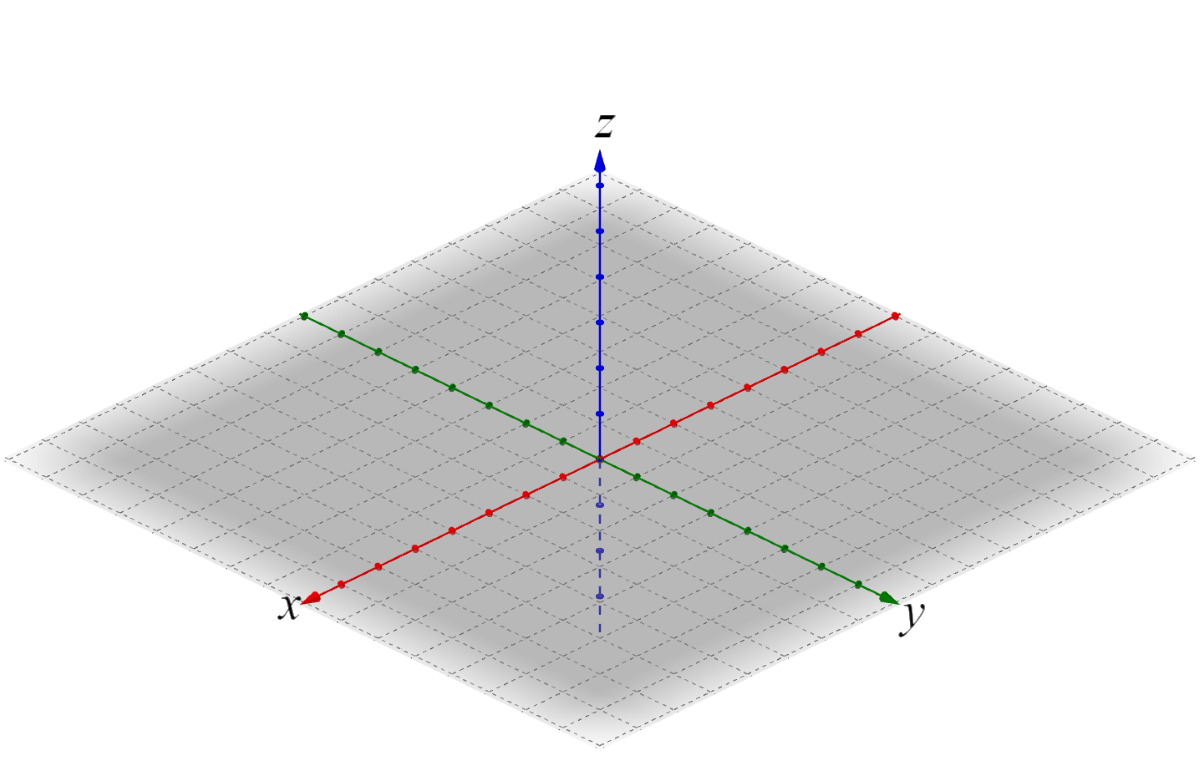
Graph points by moving out along the x-axis, then over along the y-axis, and up the z-axis. It is helpful to use grid paper.
Graph by
Graph A(5, 6, 3) and B(–2, –4, 0)
Solution
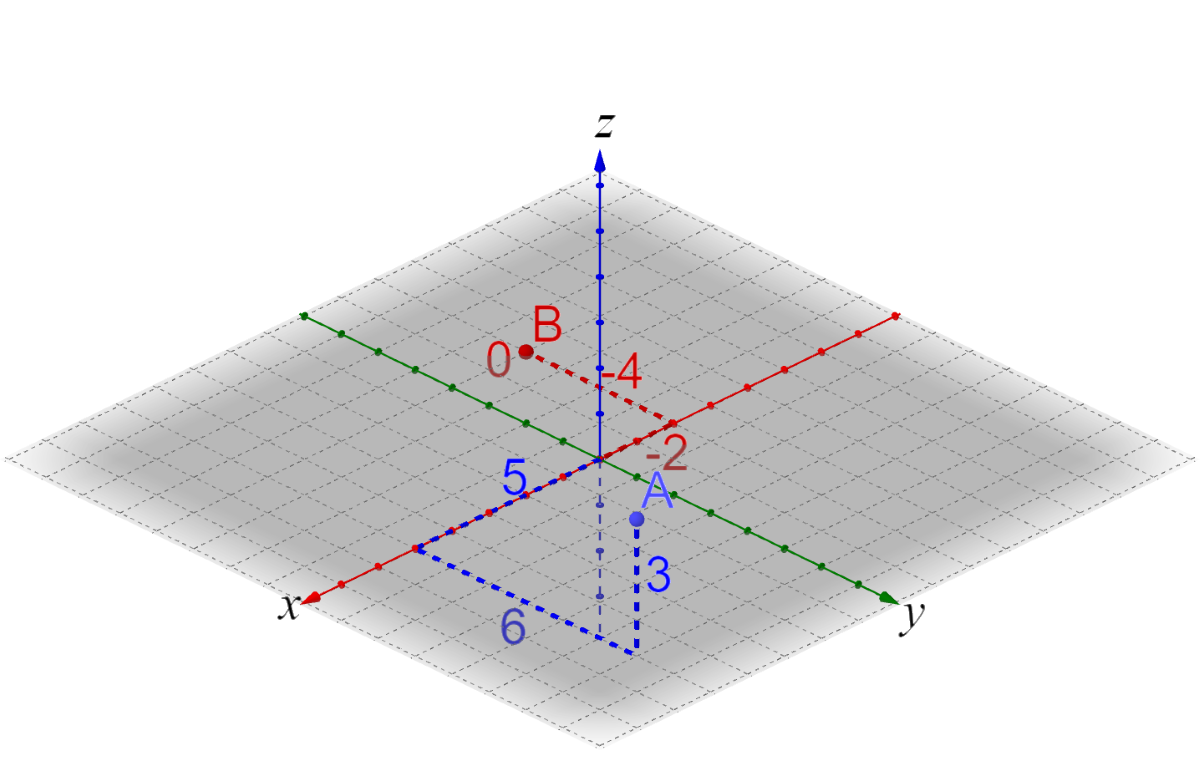
Graph A(2, –5, 4) and B(–3, 6, –3)
Answer
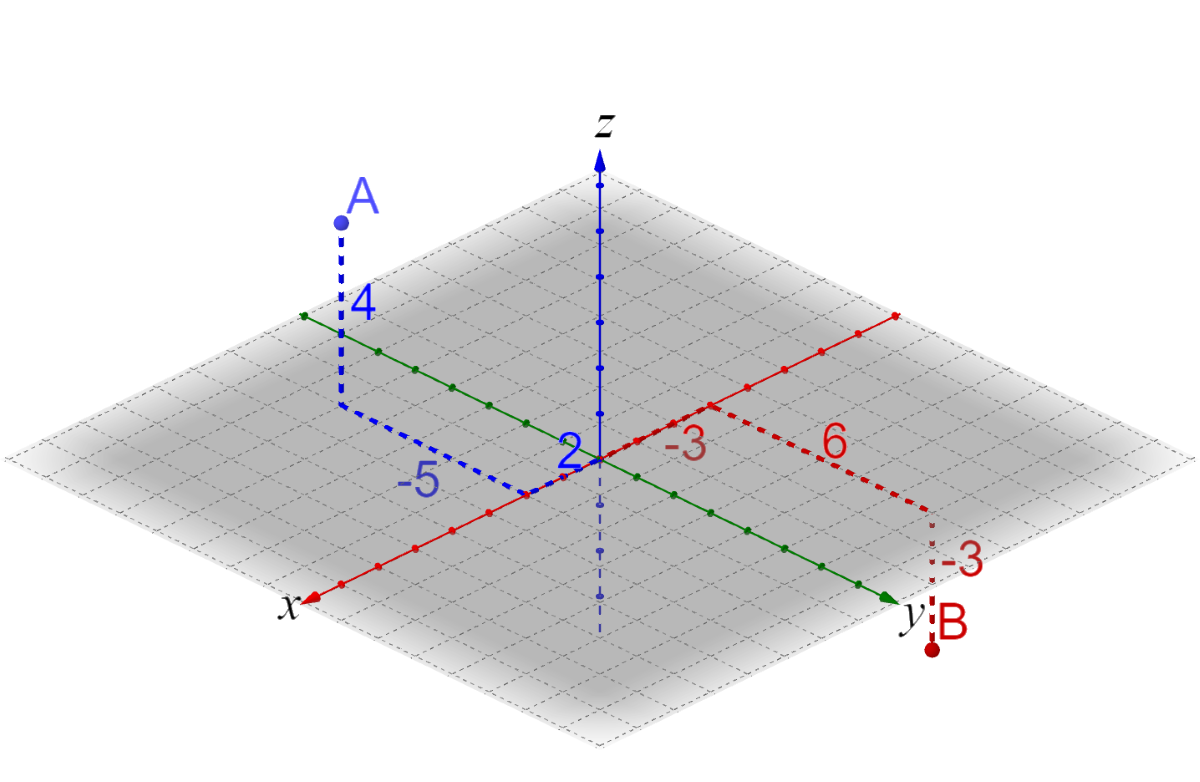
The distance and midpoint formulas in three dimensions are just extensions of two dimensions. The distance formula in two dimensions comes from the Pythagorean Theorem. In three dimensions, the Pythagorean Theorem has to be used twice: first in the xy-plane with just the x- and y-coordinates, then with that distance and the distance the z-coordinate is above the plane. This produces
$$ d = \sqrt{(x_2 - x_1)^2 + (y_2 - y_1)^2 + (z_2 - z_1)^2} $$
In two dimensions, the midpoint formula is the average or arithmetic mean of the two endpoints of the segment. This is still true in three dimensions.
$$ Midpoint = \left(\frac{x_1 + x_2}{2}, \frac{y_1 + y_2}{2}, \frac{z_1 + z_2}{2}\right) $$
$$ d = \sqrt{(x_2 - x_1)^2 + (y_2 - y_1)^2 + (z_2 - z_1)^2} $$
$$ Midpoint = \left(\frac{x_1 + x_2}{2}, \frac{y_1 + y_2}{2}, \frac{z_1 + z_2}{2}\right) $$
Find the (a) distance and (b) midpoint between A(2, 4, –6) and B(–4, 3, 2).
Solution
The first point, A(2, 4, –6), is (x1, y1, z1) and the second point, B(–4, 3, 2), is (x2, y2, z2). Substitute those points into the distance formula and evaluate.
$$ d = \sqrt{(x_2 - x_1)^2 + (y_2 - y_1)^2 + (z_2 - z_1)^2} $$
$$ AB = \sqrt{(-4 - 2)^2 + (3 - 4)^2 + (2 - (-6))^2} $$
$$ AB = \sqrt{(-6)^2 + 1^2 + 8^2} $$
$$ AB = \sqrt{36 + 1 + 64} $$
$$ AB = \sqrt{101} ≈ 10.05 $$
The first point, A(2, 4, –6), is (x1, y1, z1) and the second point, B(–4, 3, 2), is (x2, y2, z2). Substitute those points into the midpoint formula and evaluate.
$$ Midpoint = \left(\frac{x_1 + x_2}{2}, \frac{y_1 + y_2}{2}, \frac{z_1 + z_2}{2}\right) $$
$$ Midpoint = \left(\frac{2 + (-4)}{2}, \frac{4 + 3}{2}, \frac{(-6) + 2}{2}\right) $$
$$ Midpoint = \left(-1, \frac{7}{2}, -2\right) $$
Find the (a) distance and (b) midpoint between C(7, –2, 1) and B(0, 1, 5).
Answer
\(\sqrt{74} ≈ 8.60; \left(\frac{7}{2}, -\frac{1}{2}, 3\right)\)
In two dimensions, a circle is all the points a given distance from the central point, and its equation is (x − h)2 + (y − k)2 = r2 where (h, k) is the center and r is the radius. In three dimensions, all the points a given distance from the central point is a sphere, and its equation is (x − h)2 + (y − k)2 + (z − k)2 = r2 where (h, k, j) is the center and r is the radius.
Graph a sphere by plotting the center and going every direction the distance of the radius. Usually two or three circles are drawn to represent the sphere.
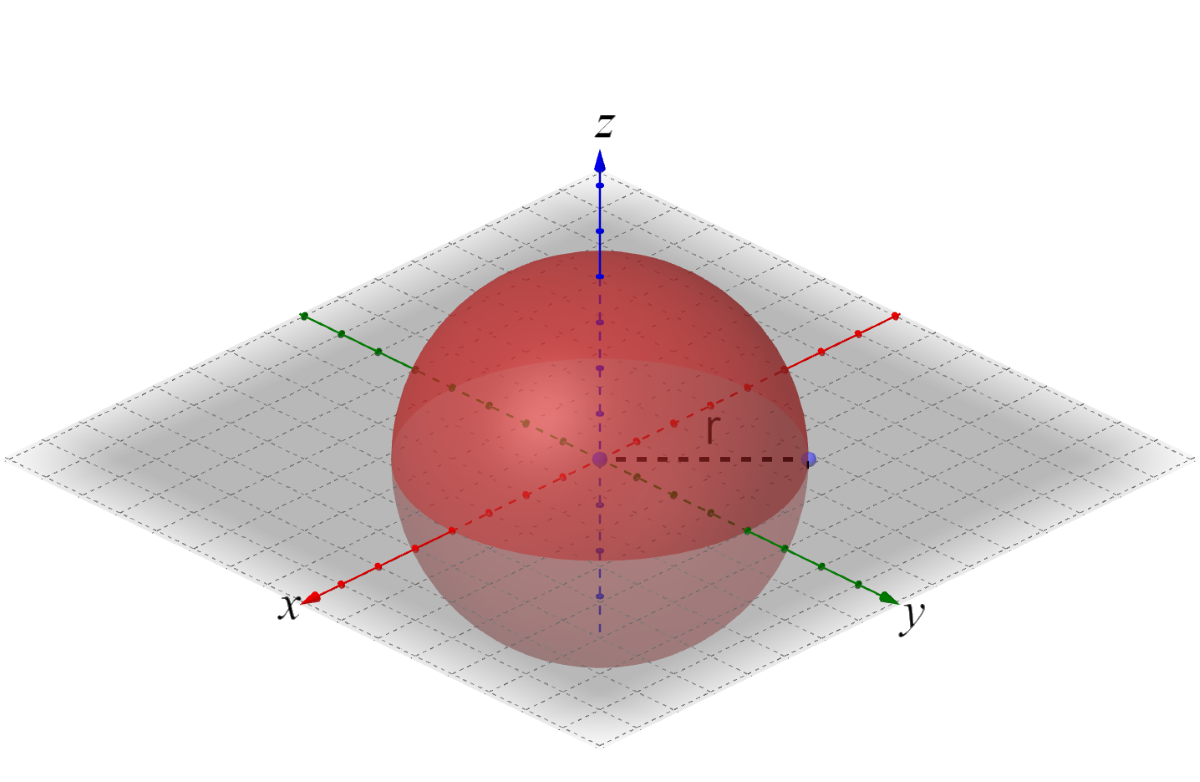
(x − h)2 + (y − k)2 + (z − j)2 = r2
where (h, k, j) is the center and r is the radius.
Graph (x − 2)2 + (y + 1)2 + (z + 1)2 = 16
Solution
Compare the equation to (x − h)2 + (y − k)2 + (z − k)2 = r2 to find the center and radius. The center is (h, k, j) which is (2, –1, –1) for this equation. r2 is 16, so r = 4.
Graph the center and move each direction the distance of the radius, 4.
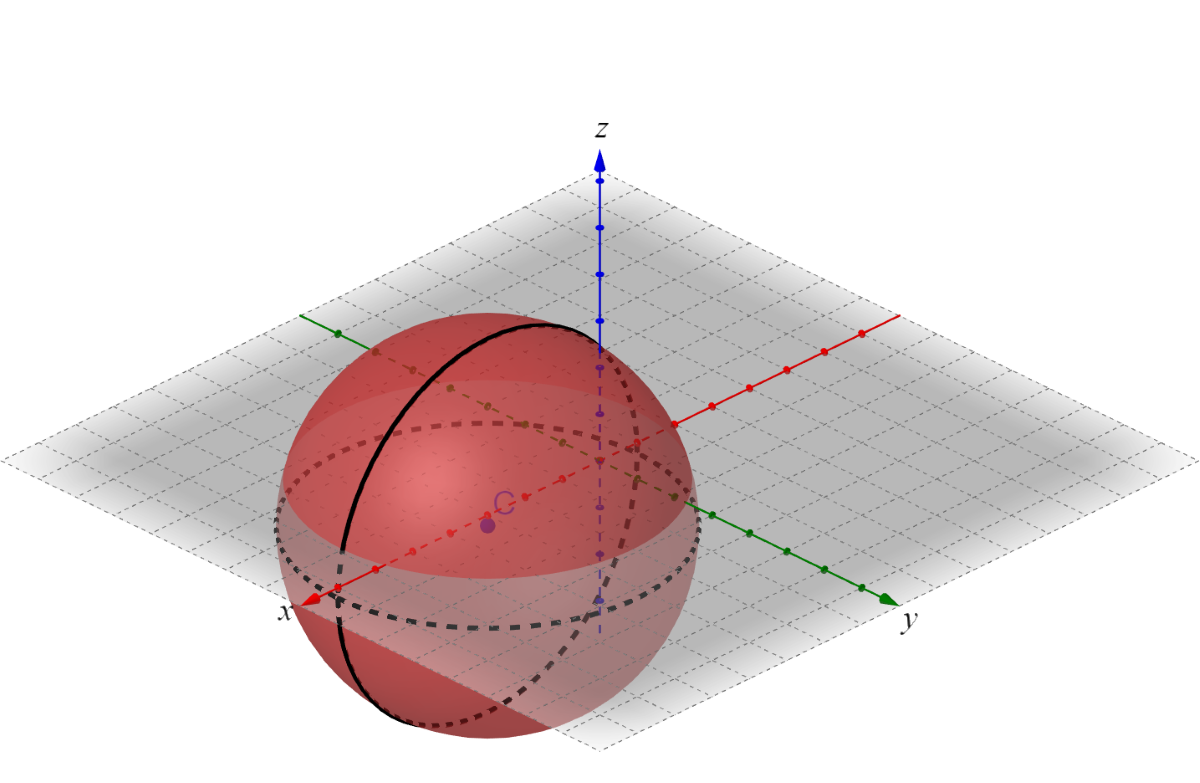
Graph (x + 1)2 + y2 + (z − 1)2 = 9
Answer
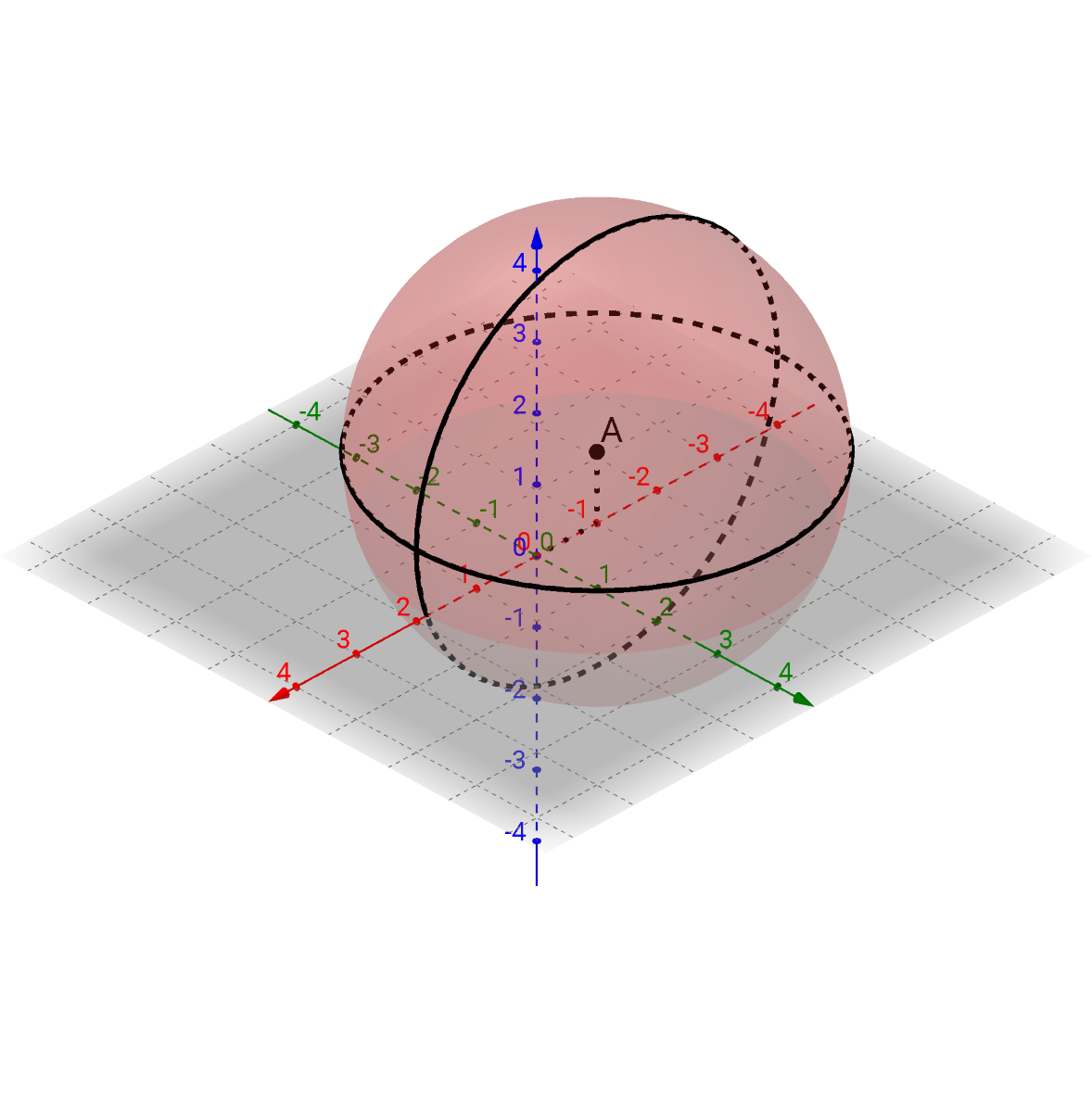
Graph by
$$ d = \sqrt{(x_2 - x_1)^2 + (y_2 - y_1)^2 + (z_2 - z_1)^2} $$
$$ Midpoint = \left(\frac{x_1 + x_2}{2}, \frac{y_1 + y_2}{2}, \frac{z_1 + z_2}{2}\right) $$
(x − h)2 + (y − k)2 + (z − j)2 = r2
where (h, k, j) is the center and r is the radius.
Helpful videos about this lesson.
